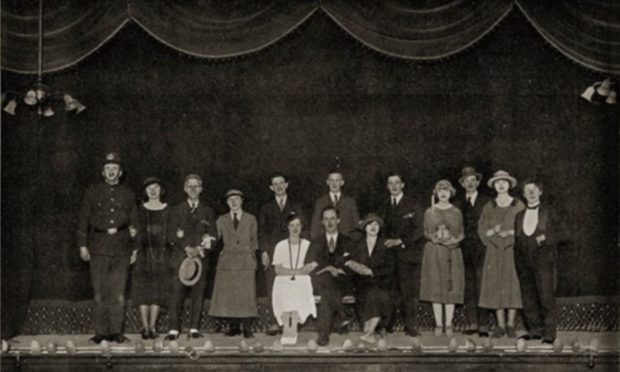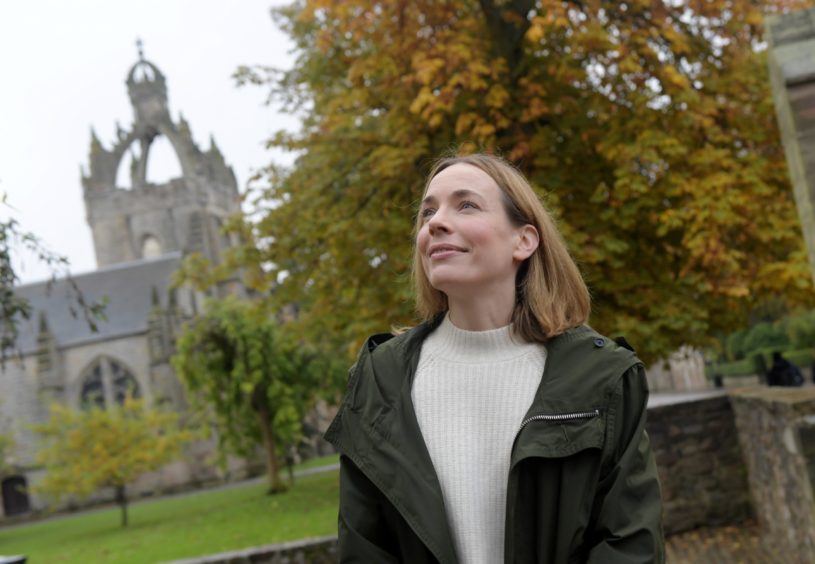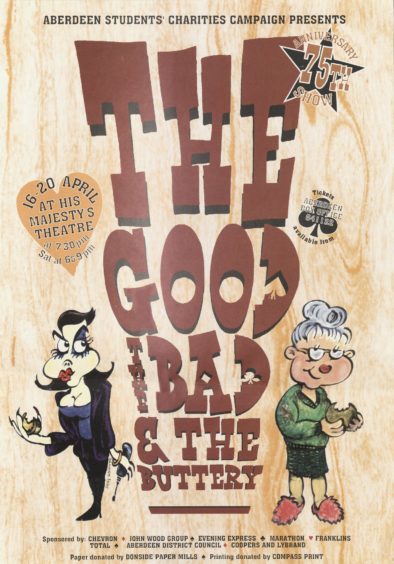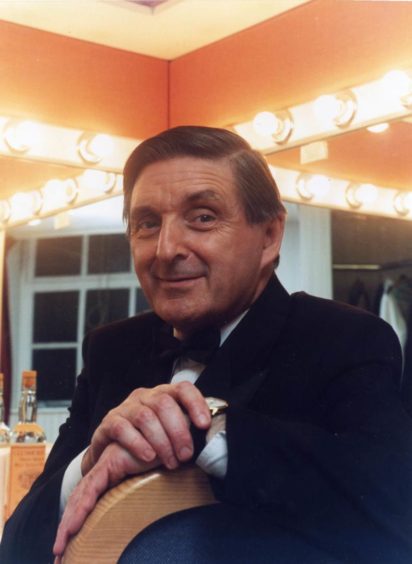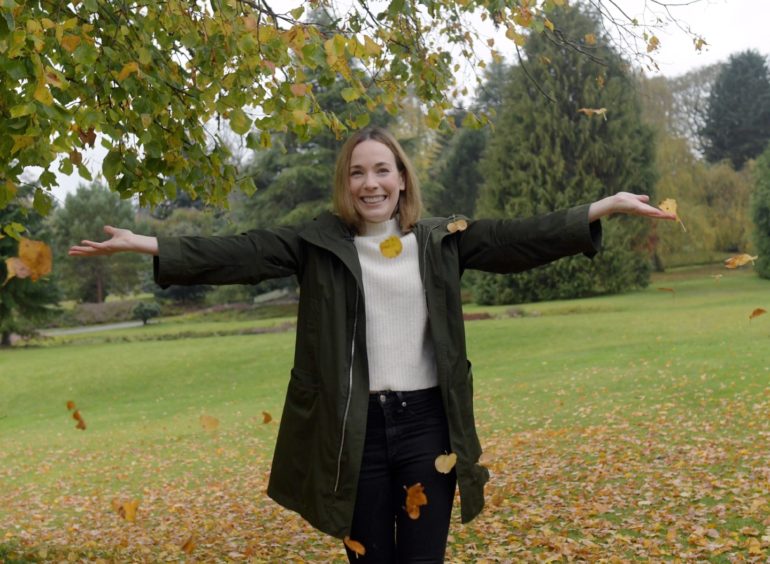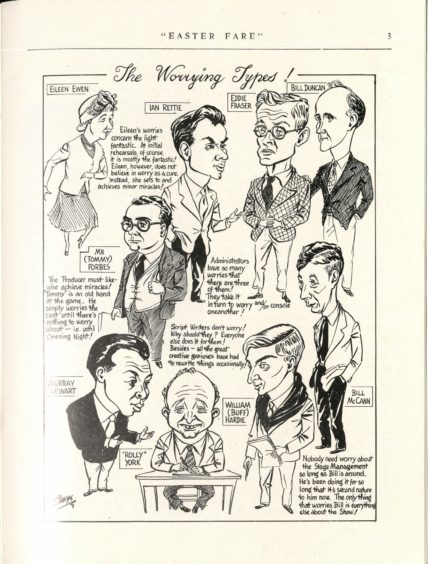It’s Britain’s oldest student show and has served up everything from The Good, The Bad and the Buttery to From Rubislaw with Love.
And, even while generations of students have trodden the boards and slapped on the greasepaint, Aberdeen Student Show, which is celebrating its centenary, has granted opportunities to such luminaries as the Scotland the What? team, author Eric Linklater and Call the Midwife star Laura Main.
A new online exhibition has been organised to highlight 100 years of the event, which has supported scores of local charities and provided a launch pad for the careers of some of Scotland’s most well-known cultural figures.
The show started life back in 1921 in Aberdeen
The fun and festivities began in 1921 at Aberdeen University and, in more recent years, the often droll and distinctively Doric offerings have involved students from North East College and Robert Gordon University.
The show, which was originally conceived as a fundraising exercise during rag week has evolved in many ways, since its inaugural offering as the Debater in Marischal College, which took the form of a mock trial.
But the proceedings soon developed a momentum of their own when talented students began to realise the possibilities of creating their own unique take on life amid the granite buildings which permeated old Aberdeen.
The first proper scripted musical comedy – 1922’s Stella the Bajanella – was written by Eric Linklater, who subsequently became a celebrated Carnegie-medal-winning author.
In 1945, he returned to the university as rector and provided the script for 1946’s To Meet the MacGregors.
A fascinating character, Linklater served in The Black Watch in 1917 and 1918 before receiving a bullet wound and later became a sniper.
It was hardly surprising that, following his harrowing experiences of trench warfare, he emerged as one of the driving forces behind the Aberdeen Show’s efforts to light up life for north-east residents in the post-war era.
The shows have taken place every year apart from 2020 when the Covid pandemic brought the curtain down on the entertainment world. But, undeterred, a planned performance of Freezin will take place later in 2021.
The new exhibition will delve into the university’s archives, highlighting posters, souvenir programmes, cast photographs and footage of past shows.
Productions have featured many talented people
Organisers believe the programme has got something for everybody, including a fair sprinkling of Doric which has played such a prominent role in the shows, not least in their humorous titles.
Yet the productions haven’t only boosted those in the limelight.
On the contrary, they have featured many talented people behind the scenes, including costume designers, set builders and administrators, helping to make the shows possible and keeping the wheels moving off the stage.
While the format might have alternated between single story musical comedies and sketch-based revues, what hasn’t changed is the intensity of the ‘student show bubble’ which has been experienced by cast and crew.
Becky Hossick, one of the stars of 2019’s The Glaikit Showman, described it as a “bonding experience.”
She said: “You get to know everyone really closely.
“I have never been part of something where you genuinely just love everyone, even if you don’t have a lot of things in common.”
The bonds forged have often endured for generations, most famously among the members of renowned entertainment trio Scotland the What? who first met and worked together in the 1950s.
It was after Buff Hardie, Steve Robertson and George Donald wrote, composed and directed the 1968 show, Running Riot, that they decided to stage their own act at the Edinburgh Festival with James Logan as director.
This was the catalyst for a decades-long comedy partnership which eventually led to the members being awarded the Freedom of the City of Aberdeen in 2007. Mr Hardie, the last surviving member, died last November, aged 89.
Call the Midwife star Laura Main hails ‘local humour’
Laura Main, who is renowned for her role in the BBC drama Call the Midwife, has affectionately recalled her memories of starring in performances such as The Good, The Bad and the Buttery and From Rubislaw with Love – other striking titles have included Back to the Teuchter and Mary Torphins.
She said: “The student show is just so well put together.
“It’s always an amazing writing team, it is hysterical and it is local humour.
“It’s celebrating and having a little bit of fun about our city.”
Many romances have also blossomed amid the boisterous creative buzz which has habitually surrounded the rehearsals and event staging.
“I always used to joke that the student show was the biggest matrimonial agency in town,” said Sheila Sinclair, who was a member of the dancing chorus in Mr Hardie’s first show, 1951’s Spring in Your Step.
“Many a person met their ‘fate’ in the student show, and I met mine,” she added – a reference to her late husband, George Sinclair, who was involved in the shows for many decades as stage manager.
Mrs Sinclair worked as wardrobe mistress in 1955, and the couple’s daughters Julie and Susan also featured in the productions during the 1980s.
As she said: “It has been a large part of our lives, and a very happy part.”
The busy programme of centenary celebrations will commence with what has been billed as a ‘collections conversation’ on Teams at 10am on Thursday April 29.
This will discuss the university’s archive of student show memorabilia and how it will be used it in the online exhibition.
Members of the public have been invited to join the online exhibition from April 29 at www.abdn.ac.uk/studentshow100
